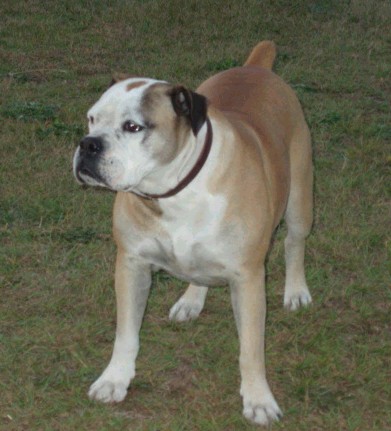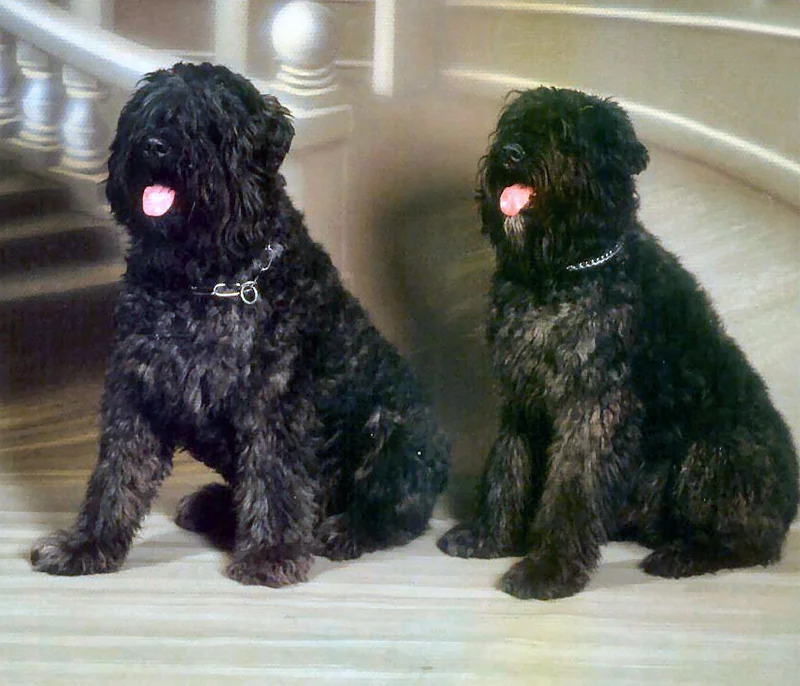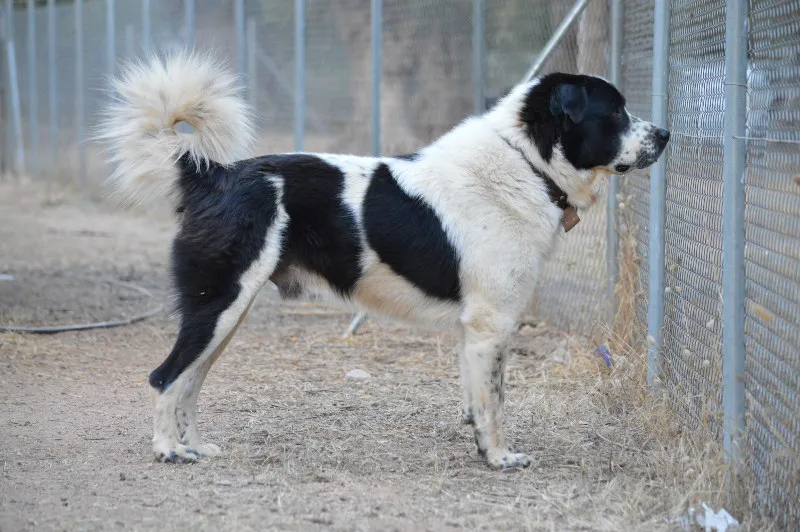Molossus of Epirus
The Molossus of Epirus is a powerful ancient breed known for its loyalty and protective instincts. A livestock guardian and war dog, it is a direct ancestor of many modern mastiffs.
Overview
🐕Breed Overview
✨Key Traits
💡What Makes Molossus of Epirus Special
One of the standout traits of the Molossus of Epirus is its unwavering loyalty to its family and its natural guarding instincts. These dogs are known for their bravery, often willing to confront threats to protect their loved ones.
Their intelligence allows them to learn commands and tasks quickly, making them suitable for various roles beyond guarding. Additionally, their strong physical presence and protective nature make them excellent watchdogs, capable of deterring intruders.
Owners should be prepared to provide consistent training and socialization to harness these traits positively.
The Molossus of Epirus is an ancient breed that has left a significant mark on the history of canine development. Originating from the mountainous regions of Greece, this large and powerful dog was bred primarily for guarding livestock and serving as a war dog. With a history that dates back to the time of Alexander the Great, the Molossus is considered a direct ancestor of many modern mastiff breeds, including the St.
Bernard and Rottweiler. Known for their loyalty and protective nature, these dogs were revered by the Molossian people for their ability to guard flocks against predators and intruders. Physically, the Molossus of Epirus is characterized by its large, compact body, strong bones, and a broad head.
Males typically stand between 66-75 cm tall and weigh between 50-70 kg, while females are slightly smaller. Their coat is medium-length and dense, providing protection against the elements. The breed's temperament is marked by intelligence, loyalty, and a strong bond with their owners, making them excellent guardians of both livestock and property.
Despite their historical significance, the Molossus of Epirus is now a rare breed, with efforts underway to preserve and promote its lineage. Organizations dedicated to the breed are working to ensure its survival and recognition in the modern canine world. For potential owners, understanding the breed's needs for exercise, training, and socialization is crucial to fostering a happy and healthy companion.
With the right environment and care, the Molossus of Epirus can be a devoted and protective member of the family, embodying the strength and loyalty that has defined this breed for centuries.
🎉Fun Facts
The Molossus of Epirus is considered one of the ancestors of many modern mastiff breeds.
Their protective nature makes them excellent family guardians, often forming strong bonds with their owners.
They were used by ancient Greeks for both guarding livestock and in warfare.
Breed Characteristics
Family & Friends
Good Behavior
Get Up & Go
Household Harmony
Temperament & Personality
✨Key Traits
🐕Core Temperament
The Molossus of Epirus possesses a temperament that is both protective and affectionate. They are known for their intelligence and loyalty, often forming strong bonds with their families.
While they can be wary of strangers, their friendly nature towards familiar people makes them excellent family companions. Their protective instincts can lead to assertive behavior, especially if they sense a threat.
Early socialization and training are essential to ensure they develop into well-rounded adults. Overall, their temperament makes them suitable for families, provided they receive proper guidance and care.
💫Personality Profile
The Molossus of Epirus is known for its loyalty and protective instincts. These dogs are intelligent and dedicated, often forming strong bonds with their families.
They are generally friendly towards people they know but can be wary of strangers, making early socialization crucial. Their bravery and willingness to protect their herd or family can lead them to be quite assertive, especially in unfamiliar situations.
Despite their imposing size, they are affectionate and enjoy spending time with their families, often seeking companionship and attention.
🔊Vocal Tendencies
The Molossus of Epirus is not known for excessive barking, typically only vocalizing when necessary to alert their owners of potential threats. They may bark to communicate with their owners or when they perceive an intruder.
Their vocalizations are generally deep and commanding, reflecting their size and strength. While they are not prone to constant barking, they will express themselves when they feel it is warranted, making them effective guardians without being overly noisy.
Affection & Social Traits
Energy & Activity
Communication Style
Care Requirements
🏃♂️Exercise Requirements
Daily Exercise
The Molossus of Epirus, being a historically active breed, requires a moderate amount of daily exercise to maintain its physical health and mental well-being. Ideally, this breed should engage in at least 60 minutes of exercise each day, which can be broken down into two or three sessions. Activities such as brisk walks, playtime in a secure yard, and engaging in dog sports like obedience or agility can be beneficial.
Given their history as livestock guardians, they thrive in environments where they can patrol and protect their territory. Puppies should have shorter, more frequent play sessions to avoid overexertion, while senior dogs may require gentler activities to accommodate their changing energy levels. Regular exercise not only helps manage their weight but also reduces the likelihood of behavioral issues stemming from boredom or pent-up energy.
Insufficient exercise can lead to obesity, anxiety, and destructive behaviors, making it crucial for owners to prioritize their exercise needs.
Preferred Activities
🏠Living & Adaptability
Space Requirements
The Molossus of Epirus is a large breed that requires ample space to thrive. Ideally, they should have access to a large, securely fenced yard where they can roam and patrol.
While they can adapt to living in a house with a smaller yard, it is essential that they receive sufficient exercise and mental stimulation to prevent boredom. Apartment living is not recommended due to their size and exercise needs.
Owners in urban settings should ensure they can provide daily walks and access to parks or open spaces. The breed's strong guarding instincts mean they may become anxious or destructive if confined to small spaces for extended periods.
Climate Preference
🍲Feeding Guide
Schedule
Food Types
Portion Size
Special Nutritional Needs
The Molossus of Epirus may require a diet rich in protein to support its muscular build. Owners should be cautious of overfeeding, as this breed can be prone to obesity if not exercised adequately.
Additionally, monitoring for food sensitivities is important, as some individuals may have allergies to common ingredients. Supplements such as omega fatty acids can help maintain healthy skin and coat.
✨Grooming Requirements
Grooming Overview
The Molossus of Epirus has a medium-length coat that requires regular grooming to keep it healthy and free of mats. Brushing should be done at least once a week to remove loose hair and prevent tangles, with more frequent grooming during shedding seasons.
Bathing should be done as needed, typically every few months or when the dog becomes particularly dirty. Regular checks of the ears, teeth, and nails are also essential to maintain overall health.
The breed's thick skin may require occasional moisturizing to prevent dryness, especially in harsh climates.
Care Schedule
Brush weekly; bathe every 2-3 months; trim nails every 2-4 weeks.
Health Profile
⚕️Health Care
Regular health care is crucial for the longevity of the Molossus of Epirus. Routine veterinary check-ups, vaccinations, and preventive treatments can help detect health issues early and maintain optimal health throughout their life stages.
Owners should also be proactive in monitoring their dog's weight, dental health, and joint condition, as these factors can significantly impact their quality of life. Establishing a consistent health care routine can lead to a longer, healthier lifespan for this breed.
Health Issues Overview
⏳Average Lifespan
Genetic Factors
Genetics play a significant role in the lifespan of the Molossus of Epirus, as certain hereditary health issues can affect their overall health. Responsible breeding practices are essential to minimize the risk of genetic disorders.
Potential owners should seek reputable breeders who conduct health screenings and prioritize genetic diversity to ensure the best possible outcomes for their dogs. Understanding the breed's history and potential genetic predispositions can help owners make informed decisions when selecting a puppy.
Living Conditions
The lifespan of the Molossus of Epirus can be influenced by various environmental factors, including housing conditions, climate, and social interactions. Providing a spacious, secure environment allows these dogs to express their natural guarding instincts and engage in physical activity, which is essential for their overall health.
Exposure to harsh climates can affect their well-being, so ensuring they have appropriate shelter and care is vital. Social interactions with humans and other animals can also impact their mental health, as isolation may lead to anxiety or behavioral issues.
Regular veterinary care and a balanced diet further contribute to a longer, healthier life.
🏥Common Health Issues
Hip Dysplasia
Warning Signs
🔬Diagnosis
X-rays and physical examinations by a veterinarian.
💊Treatment
Surgical options or medication for pain management.
📝Management Tips
Maintain a healthy weight, provide joint supplements, and avoid excessive jumping or running on hard surfaces.
Bloat (Gastric Dilatation Volvulus)
Warning Signs
🔬Diagnosis
Physical examination and X-rays to confirm stomach distension.
💊Treatment
Emergency surgery may be required.
📝Management Tips
Feed smaller meals, avoid vigorous exercise after eating, and monitor for signs of distress.
Obesity
Warning Signs
🔬Diagnosis
Body condition scoring and weight assessments by a veterinarian.
💊Treatment
Dietary changes and increased physical activity.
📝Management Tips
Implement a balanced diet and regular exercise routine to maintain a healthy weight.
🛡️Preventive Care
🔬Hip Evaluation
Hip Evaluation assesses the hip joints for dysplasia and other abnormalities, crucial for large breeds prone to hip issues.
📅 Annually after 2 years of age.
🔬Thyroid Function Test
Thyroid Function Test checks for hypothyroidism, a common condition in many breeds, including the Molossus.
📅 Every 1-2 years, or as recommended by a veterinarian.
🔬Bloat Risk Assessment
Bloat Risk Assessment evaluates the dog's risk for gastric dilatation volvulus, especially in large breeds.
📅 Before breeding and annually for older dogs.
Training
🧠Intelligence & Trainability
💪Work Drive
The Molossus of Epirus has a strong work drive, stemming from its historical roles as a livestock guardian and protector. These dogs thrive when given tasks that engage their physical and mental abilities.
Activities such as herding, obedience training, and agility can provide the necessary stimulation to keep them happy and fulfilled. Without adequate mental engagement, they may become bored and exhibit undesirable behaviors.
Owners should aim to provide a variety of activities that challenge their intelligence and utilize their natural instincts.
⚠️Training Considerations
Training a Molossus of Epirus can present some challenges, particularly due to their strong guarding instincts and independent nature. They may exhibit stubbornness or a reluctance to follow commands if they perceive them as unnecessary.
Early socialization is crucial to help them become well-adjusted adults. Owners should focus on positive reinforcement techniques, using treats and praise to encourage desired behaviors.
Consistency and patience are key, as these dogs may take time to learn commands. Additionally, their protective nature may lead them to be wary of strangers, necessitating controlled introductions and ongoing socialization to prevent aggressive tendencies.
📝Training Tips
To effectively train a Molossus of Epirus, owners should start with basic obedience training as early as possible. Utilizing positive reinforcement methods, such as clicker training, can help engage their intelligent minds.
Short, frequent training sessions are recommended to maintain their attention and enthusiasm. Incorporating play into training can also enhance their learning experience.
Socialization with various people, environments, and other animals is essential to develop a well-rounded temperament. Owners should establish themselves as confident leaders, providing clear boundaries and expectations to foster respect and cooperation from their dogs.
History & Heritage
📜Origin Story
The Molossus of Epirus traces its roots back to the Molossian people, a tribe known for their formidable dogs. These dogs were bred in the rugged terrains of Epirus, where they were tasked with guarding livestock against predators such as wolves and bears.
The breed's reputation for bravery and loyalty was well-documented by ancient writers like Virgil and Aristotle, who praised their physical prowess and protective instincts. As the Greeks expanded their territories, they took these dogs with them, spreading their lineage throughout the Mediterranean and influencing the development of various mastiff breeds.
The Molossus was not only a companion to shepherds but also a formidable presence in battles, often depicted in art and literature as a symbol of strength and loyalty.
⏳Development History
The Molossus of Epirus is believed to have originated from the mountainous regions of northwestern Greece and southern Albania, developed by the Molossian tribe. This breed was primarily bred for guarding livestock and as a war dog, showcasing its versatility and strength.
Over the centuries, the Molossus has influenced many modern breeds, with its characteristics being integrated into the genetics of dogs like the Great Pyrenees and Cane Corso. The breed's physical traits and temperament have evolved, but its legacy as a protector and guardian remains intact.
Despite its extinction in its original form, the Molossus continues to be celebrated in historical accounts and breed standards.
🛡️Purpose & Historical Role
Historically, the Molossus of Epirus served multiple roles, primarily as a livestock guardian and a war dog. Its size and strength made it an effective protector against large carnivores and human threats.
In ancient Greece, these dogs were utilized for hunting and guarding properties, ensuring the safety of livestock and homes. Their reputation as fierce fighters led to their use in battles, where they were trained to confront larger animals and enemies.
The breed's versatility and loyalty made it a valuable asset in both agricultural and military settings, contributing to its esteemed status in ancient societies.
🏺Cultural Significance
The Molossus of Epirus holds a significant place in ancient Greek culture, often associated with the Molossian people who were known for their fierce and loyal dogs. These dogs were not only used for guarding livestock but also played a role in warfare, showcasing their strength and bravery.
The breed's legacy continues today as it is considered a foundational ancestor of many modern mastiff-type breeds. Its historical importance is reflected in ancient texts and artworks, such as the Roman sculpture known as the Jennings Dog, which is believed to depict a Molossus.
The breed's influence on the development of various breeds, including the St. Bernard and Rottweiler, underscores its lasting impact on canine history.
Conservation Status
This breed is extinct and no longer exists in its original form.









